Discover the famous Hungarian places in New York City! – PHOTOS

As the most ethnically diverse centre in the US, New York City is a melting pot of many different cultures. There is always a little something for everyone. The Hungarian community and all facilities and sights related to this small Central European country are scattered all across the Big Apple, although many of them can be found in Manhattan. If you happen to walk around the streets of Yorkville on the Upper East Side, chances are you will come across a whole bunch of Hungarian places. With the help of iranynewyork.hu, we have gathered all the relevant organisations, shops and restaurants that you should not miss when you are in NYC. Just keep your eyes open to spot the tricolor sign!
The Hungarian House
Tucked on the 82th Street in Yorkville in the former Hungarian quarter, stands the Hungarian House which has served as the cultural centre for the local Hungarian community for decades. Established in 1966, the centre is operated by three non-profit organisations: the American Hungarian Library and Historical Society, the Széchenyi István Society and the Hungarian Scout Association in Exteris. They hold around 350 community programs each year, although most of them are online events. Occasionally, they also host Hungarian folk dance days and educational programs for visitors who would like to immerse themselves in the rich Hungarian culture.
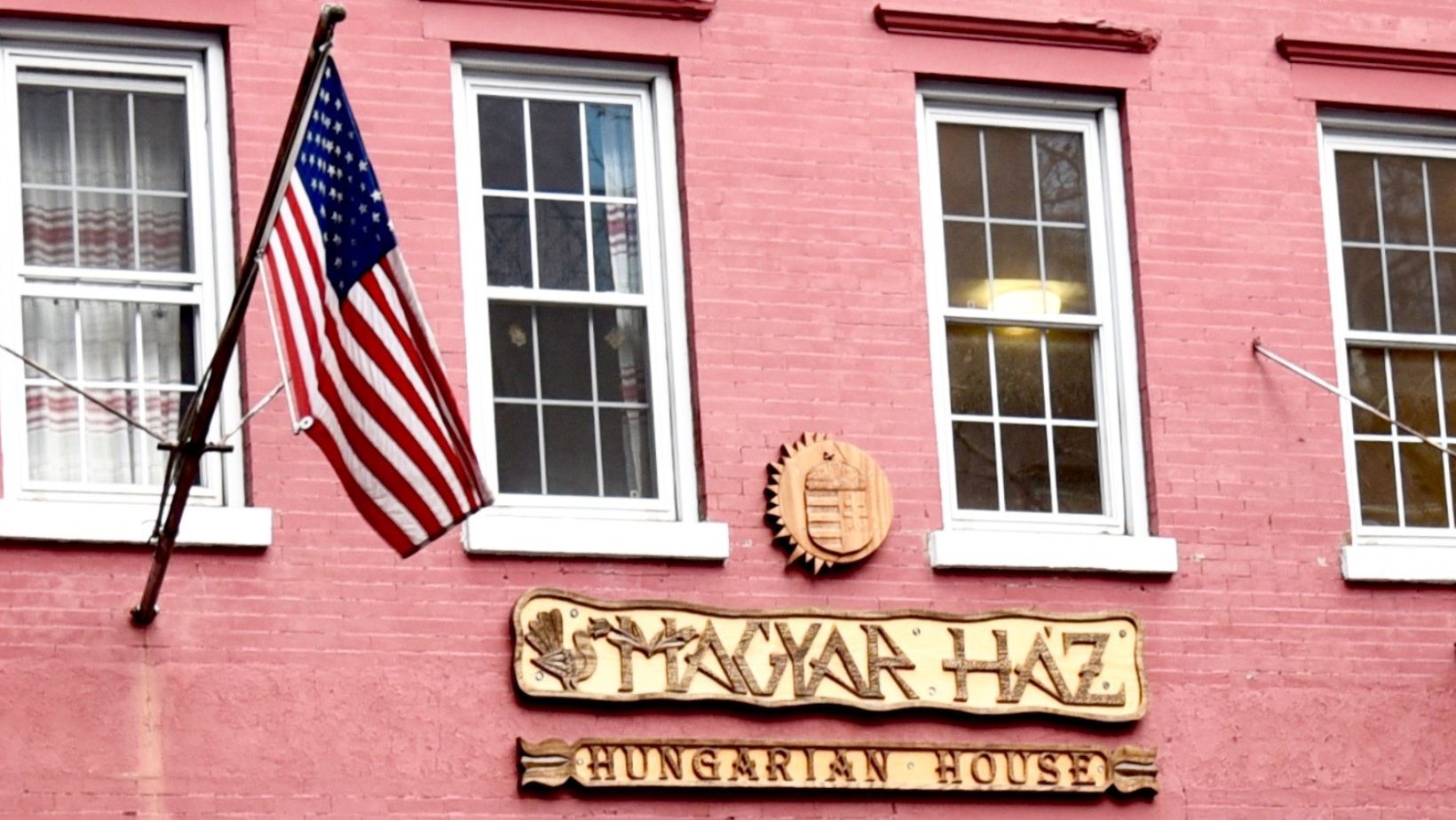
Hungarian Reformed Church
Located on 82th Street under 229, just a short walk away from the Hungarian House is the Hungarian Reformed Church. The gothic-style 300-seat church awaits Calvinist believers with regular Mass services. The Mass is held in Hungarian. The land where the impressive building stands today was bought by two Calvinist congregations in 1957 and its inauguration took place on 27 November 1960.
The First Hungarian Reformed Church of New York
The first Hungarian Reformed Church of New York is situated on East 69th Street in the Upper East Side of the New York City borough of Manhattan. Back in the day, the area around the church had a strong Hungarian presence, that is the reason why the first Hungarian Calvinist congregation, formed in 1895, chose it for its base in 1916. The stucco-faced brick building was designed by Hungarian-born architect Emery Roth. Even though the descendants of the original Hungarian immigrants gradually assimilated and moved to other neighbourhoods, the church continues to serve them, holding services in both Hungarian and English at 11 am on Sundays.
Read more: Hungarian Houses in the USA
Hungarian Pastry Shop
If you yearn for a good old Dobos cake (sponge cake layered with chocolate buttercream and topped with hard caramel) or meggyes rétes (sour cherry strudel) head to Amsterdam Avenue and 111th Street, opposite St. John the Divine where you will find the cosy and authentic Hungarian Pastry Shop. According to New York Times, the confectionery that is currently owned by Greek-descent Philip Binioris and his father Peter Binioris has fed generations of authors and students. They offer free coffee refills, a European multi-cultural atmosphere and a large variety of traditional Hungarian pastries such as Sacher tortes, ischlers, and French cream puffs.
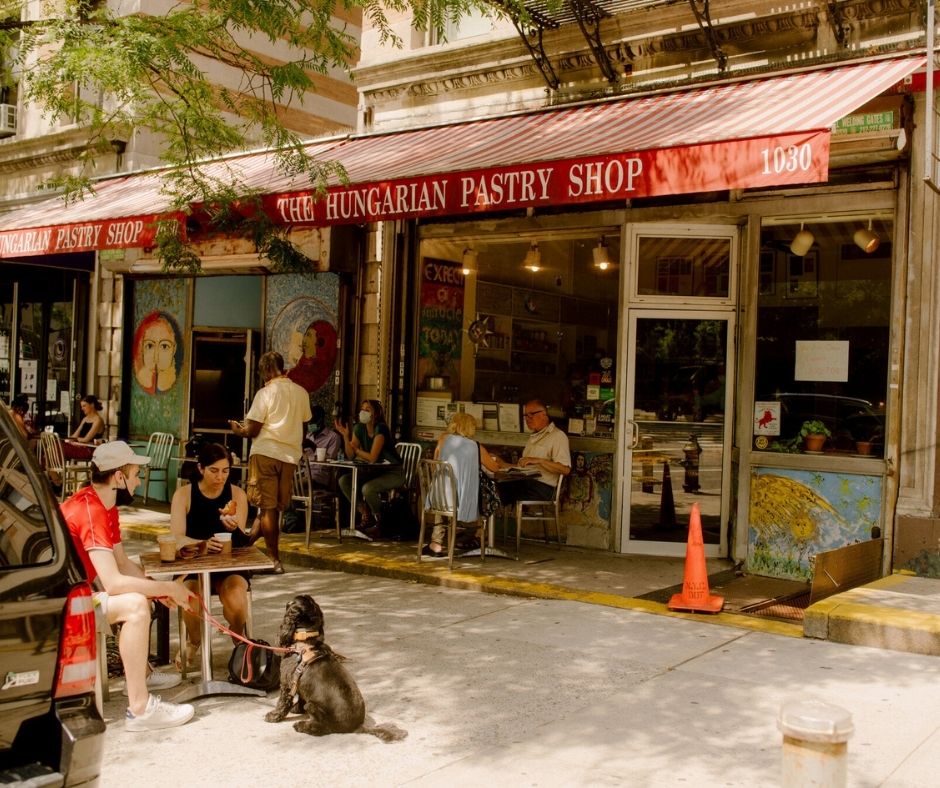
KEYBAR
Located on 13th Street 432 in East Village, KEYBAR has been run by two Hungarians, Attila and Gyula who have years of hospitality experience under their belt, since October 2002. It is a beloved meeting point for locals, and of course, for the Hungarian community. According to their Facebook page, KEYBAR triples as a bar, DJ lounge, and jewelry-box sized nightclub for a carefree international clientele who pop in for the cocktails, signature shots (including Zwack, a Hungarian herbal liqueur) during happy hour and stay for the amazing music and downtown New York-meets-Budapest vibe.
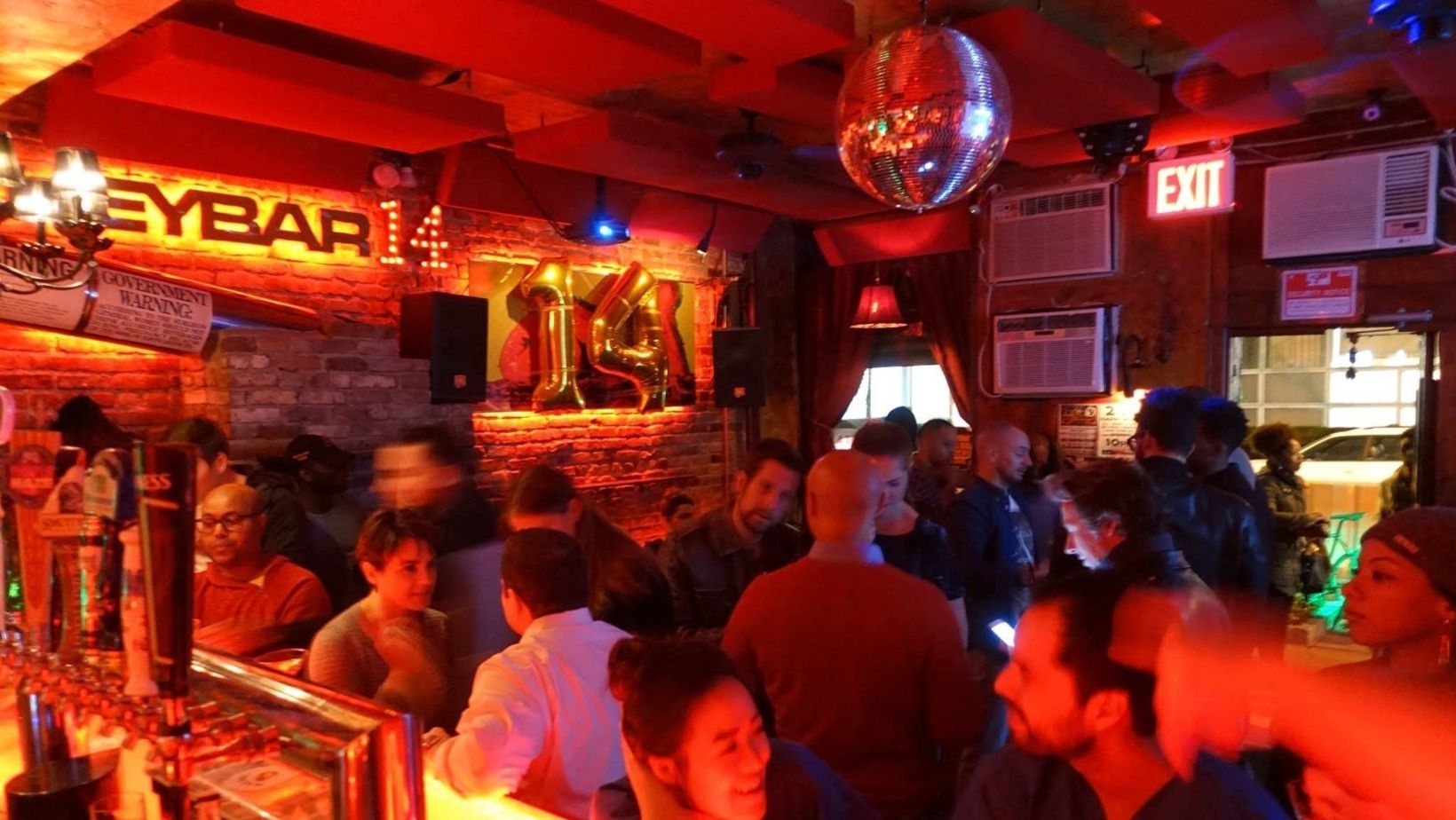
Budapest Cafe
If you miss authentic Hungarian flavours pop by this tiny quaint cafe located on the west side of 2nd Avenue between the 84th and 85th Streets. Formerly known as Andre’s Cafe, Budapest Cafe offers Hungarian comfort food at its best from savoury körözött and spicy chicken paprikash to the quintessential goulash soup. When you enter the place, there is a bakery section in front with lots of delicious cakes and pastries such as Rigó Jancsi (a traditional cube-shaped chocolate sponge cake and chocolate cream pastry), crêpes, and Dobos torte.
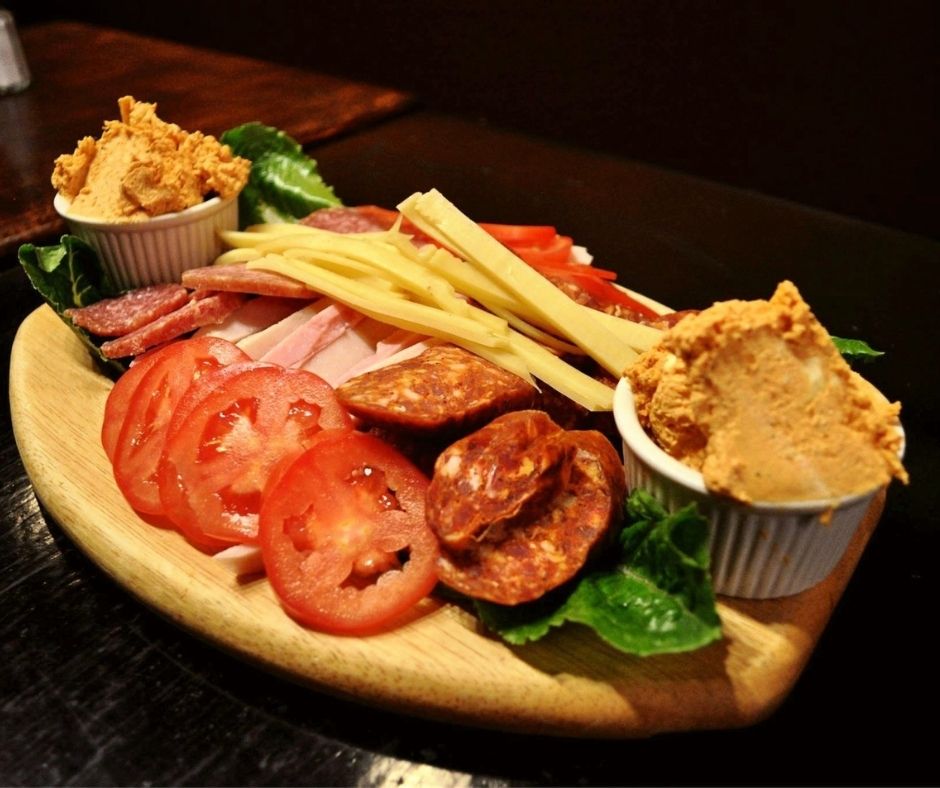
Kossuth Statue
Each year on 15 March, the local community celebrates the Hungarian Independence Day on the 113th Street on Riverside Drive at the monument to Hungarian patriot Lajos Kossuth. The bronze tableau portrays a vignette of the struggle for Hungarian independence in 1848. Atop a pedestal of Milford pink granite, a larger-than-life figure of Kossuth motions to two other male figures at the base: a revolutionary soldier and an aged peasant, representing Hungary’s new republic and the old regime, writes nycgovpark.org. The Hungarian revolutionist arrived in New York on 5 December 1851 on the steamship Humboldt, it was the first stop of his seven-month journey in the States.
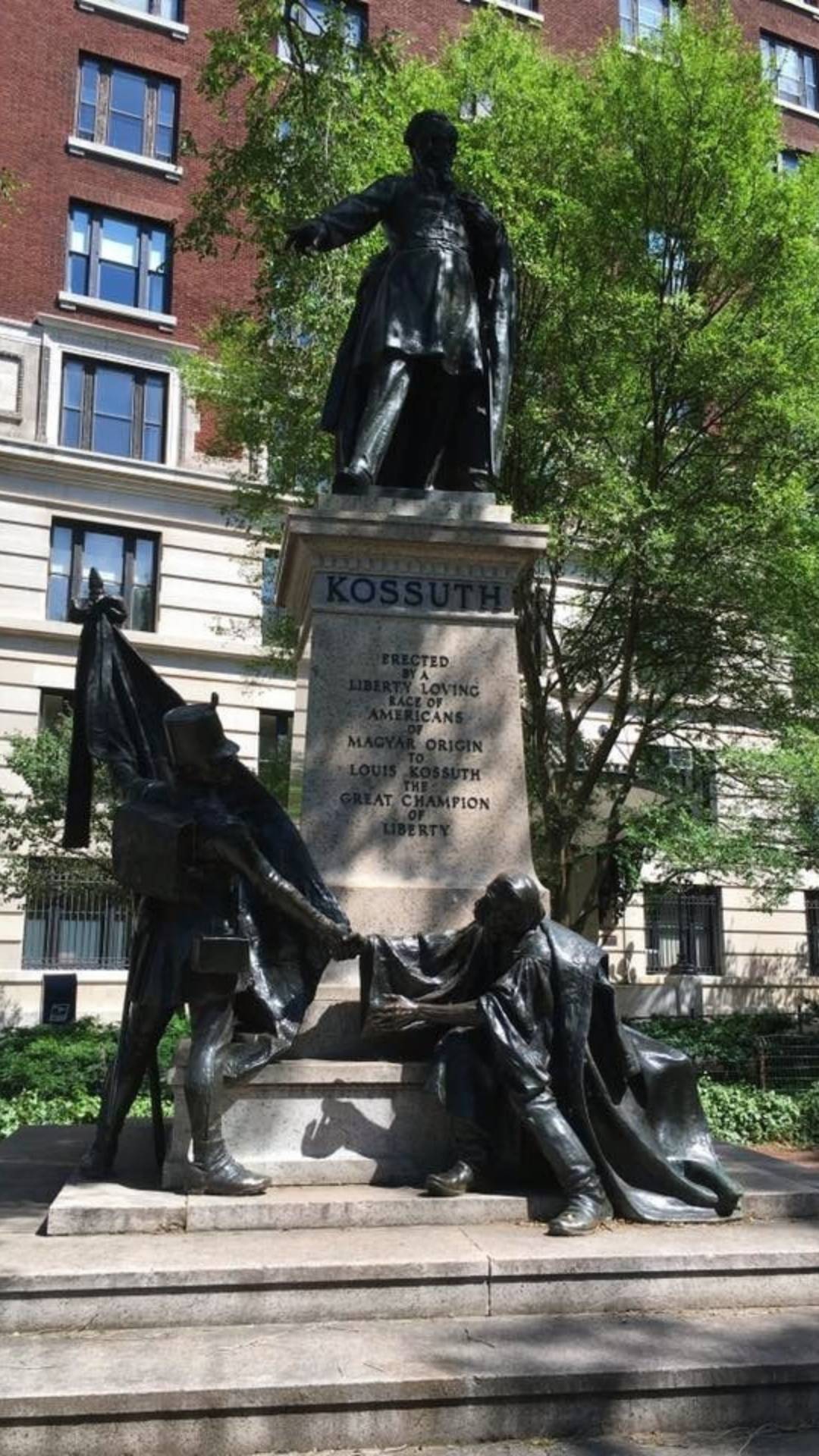
Hungarian fireplug
A couple of metres from the entrance of the Hungarian Reformed Church at 229 on the 82th Street stands a tricolor Hungarian fireplug. There is no information available on its origin, however, it is probably one of the most intriguing mementos of the former Hungarian quarter.
Mindszenty József Plaque
Mindszenty Cardinal’s visit to New York City is commemorated by a plaque that is placed on the front of the Hungarian House. The bilingual engraved inscription writes: “In this house Joseph Cardinal Mindszenty Prince-Primate of Hungary received the representatives of the Hungarians of New York City and vicinity on May 7 19743”.
Bartók Plaque
As you walk on 57th Street between 8th and 9th Avenues, you might come across a familiar face. A small plaque depicting Béla Bartók commemorates the famous 20th-century Hungarian composer on the north side of the street. Bartók left Budapest and settled in New York after the Nazis occupied Budapest in 1940. According to feastofmusic.com, the composer and his wife faced many hardships in the Big Apple as they had to survive on a small stipend from Columbia University where they spent several years transcribing the school’s extensive collection of Serbian and Croatian folk music. The Bartók statue was inaugurated on 15 March 1928 and the ceremony was attended by 15-20,000 people, some of whom traveled from Europe to New York City on boats.
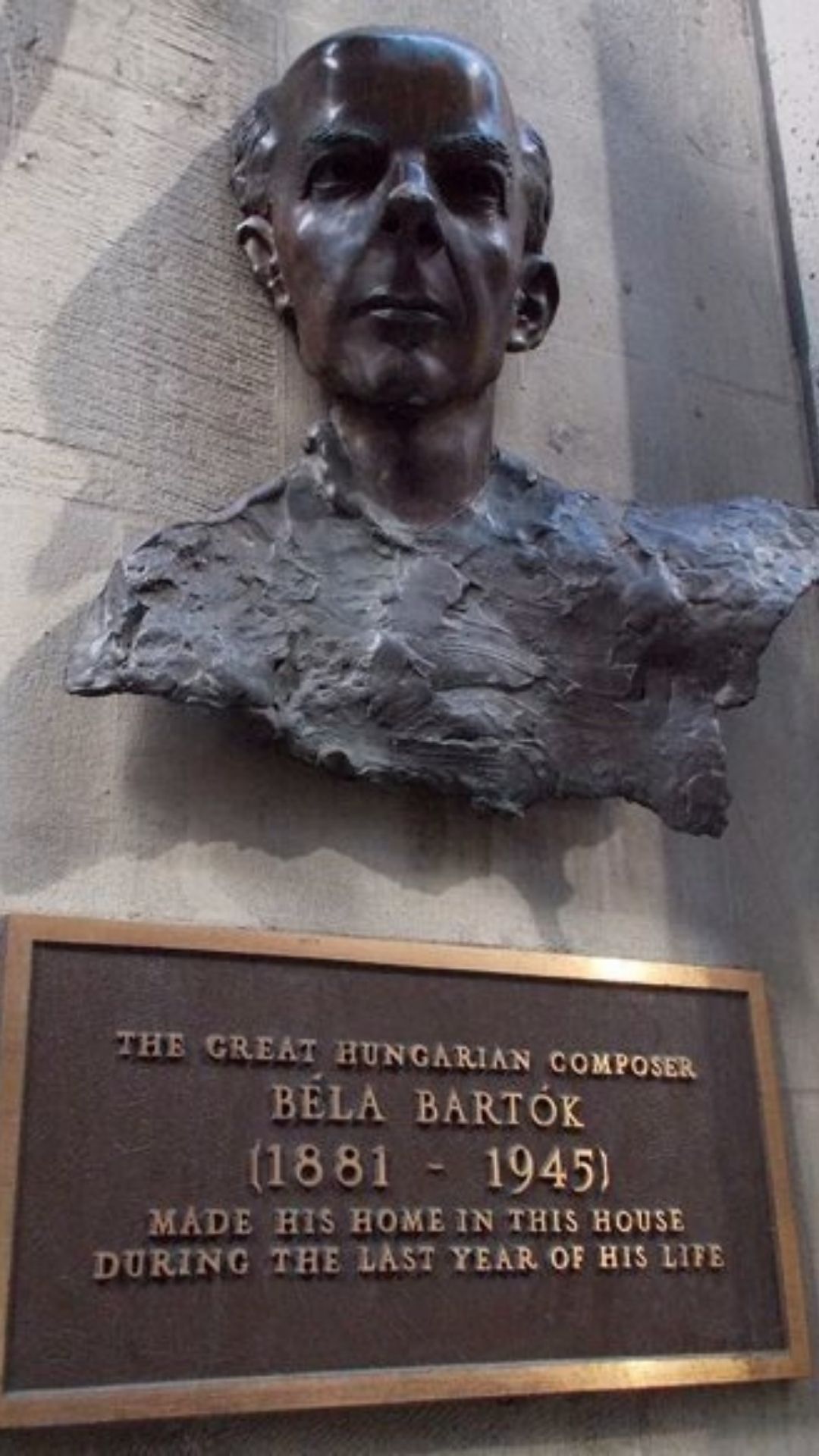
Read more: Great Hungarian communities in the USA: New York City
Source: iranynewyork.hu, nytimes.com, nycgovpark.org, feastofmusic.com





